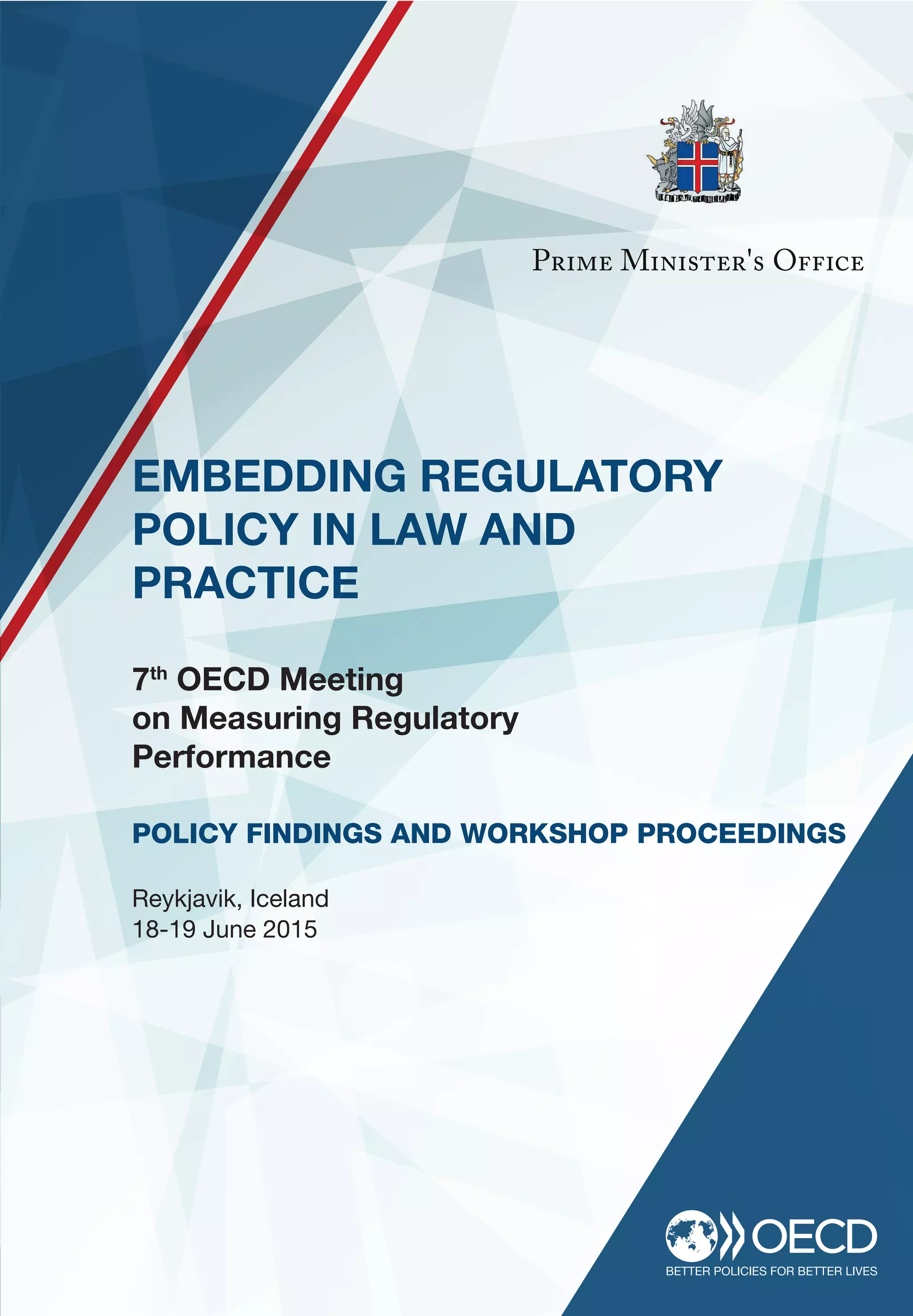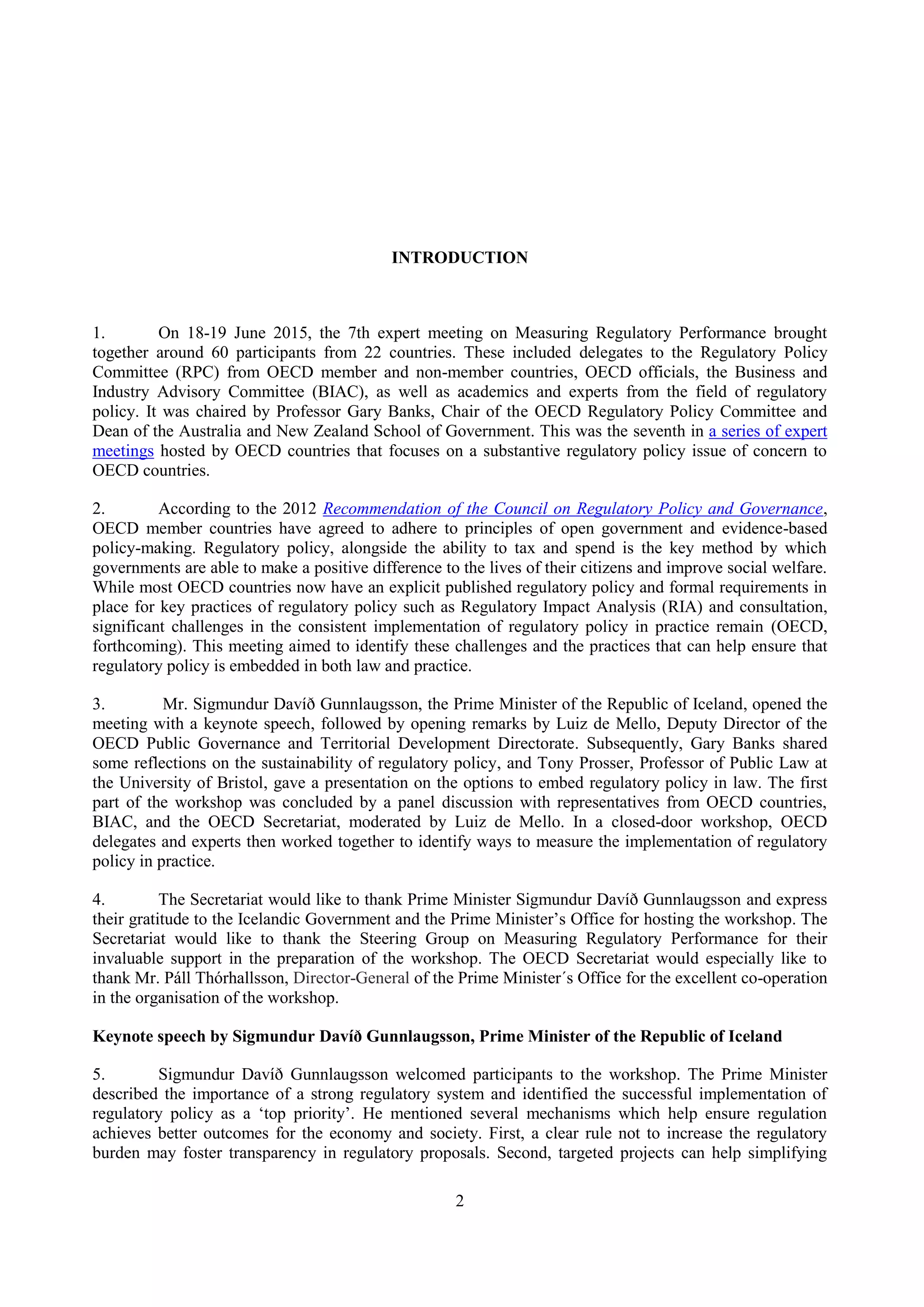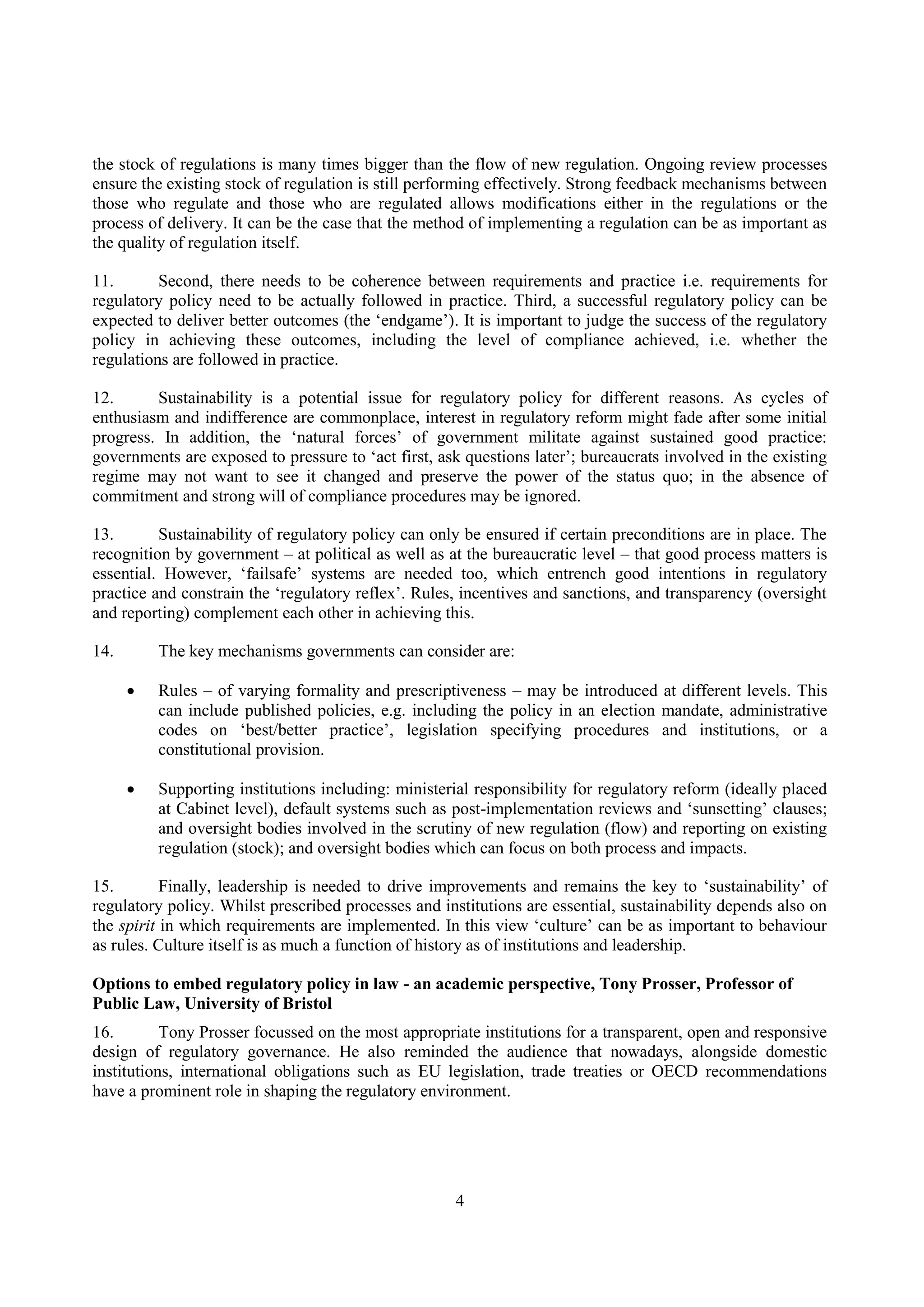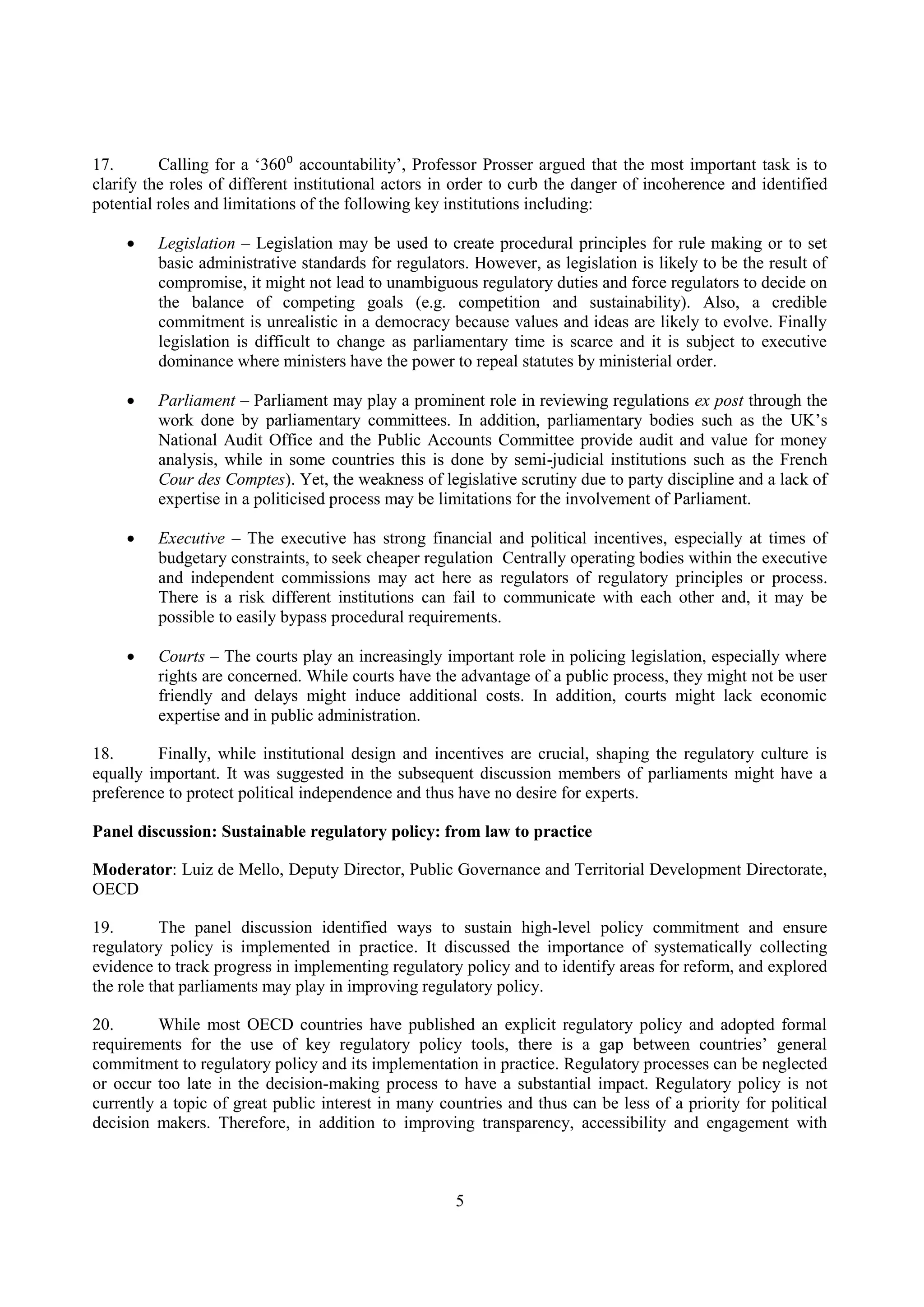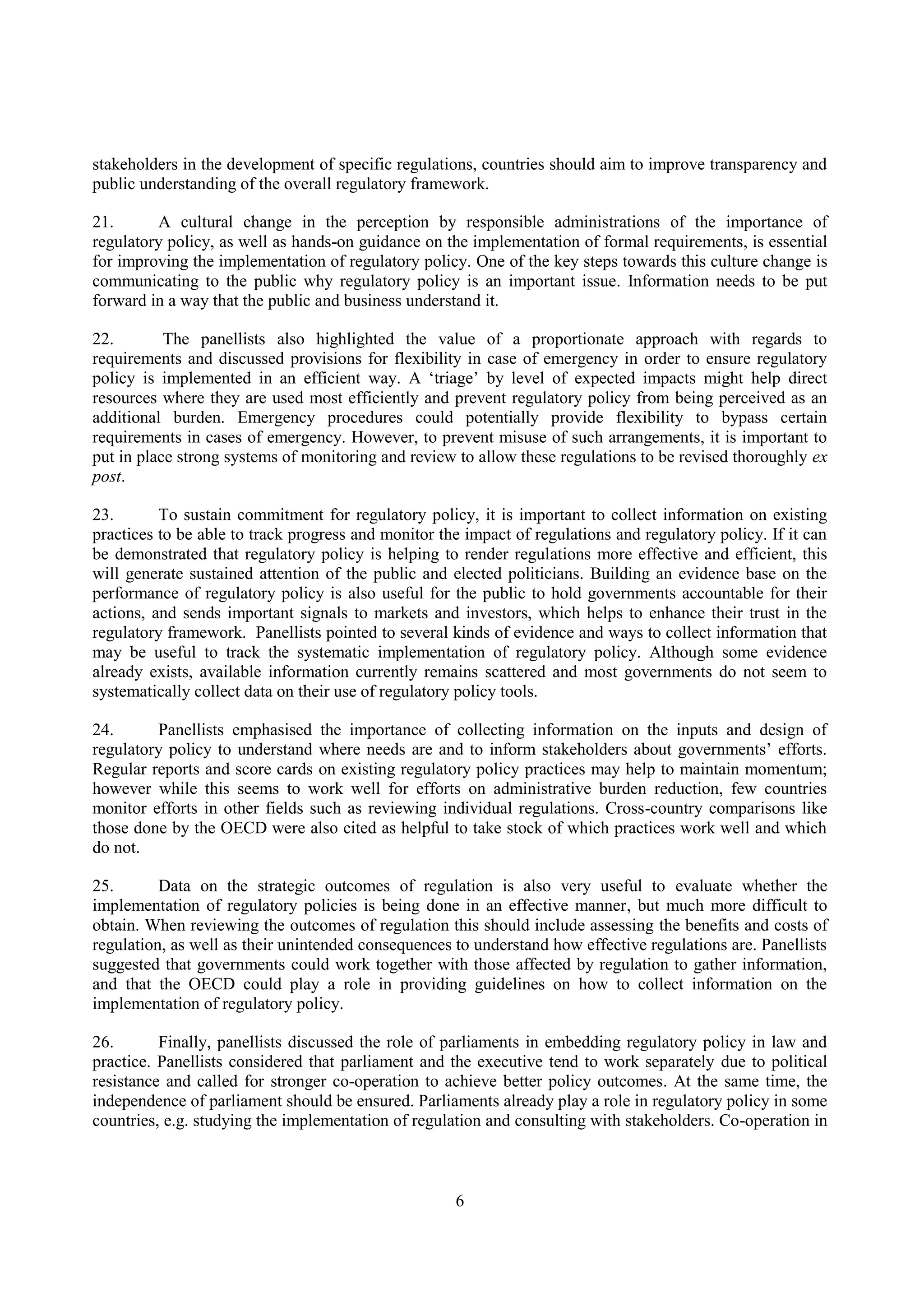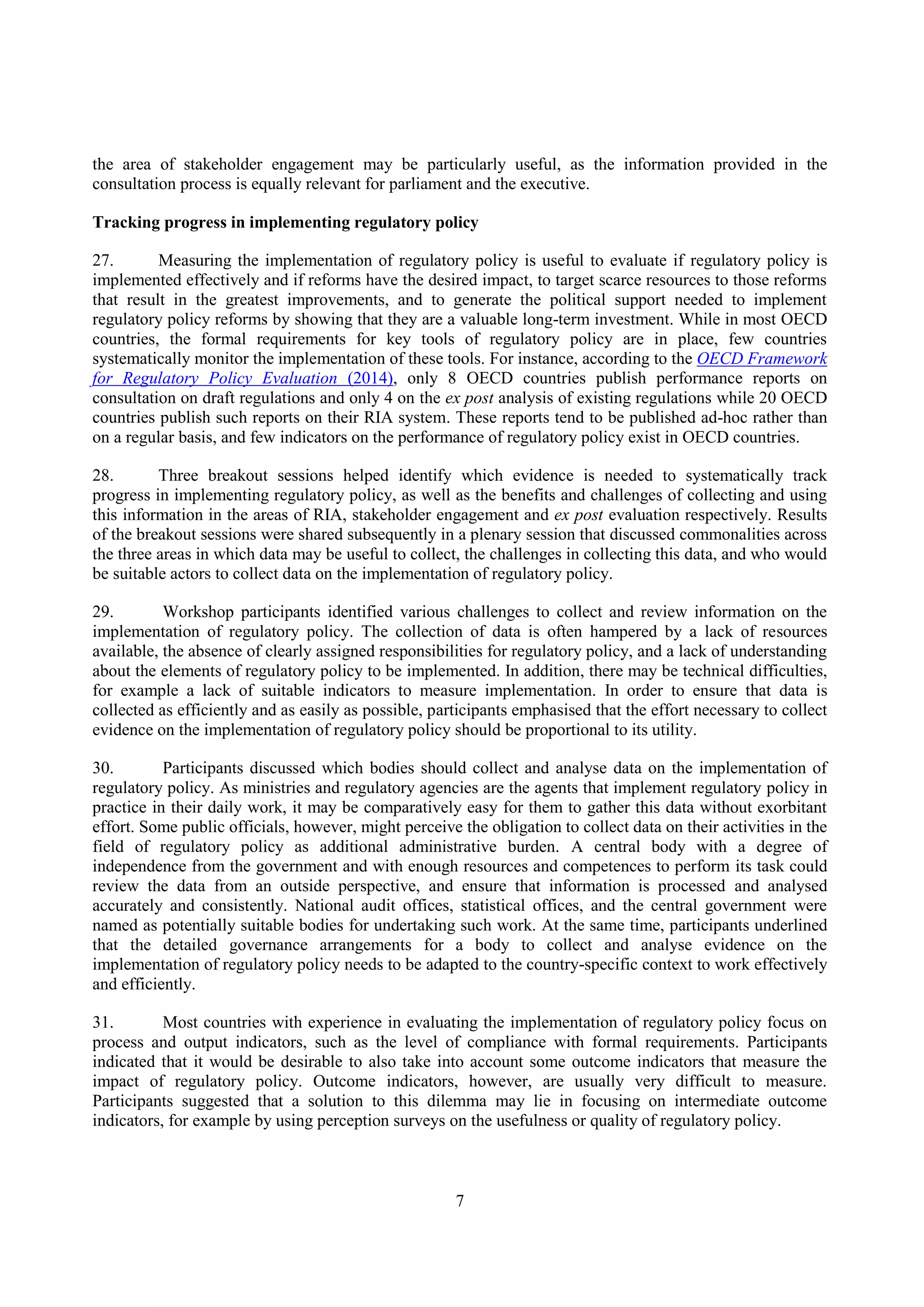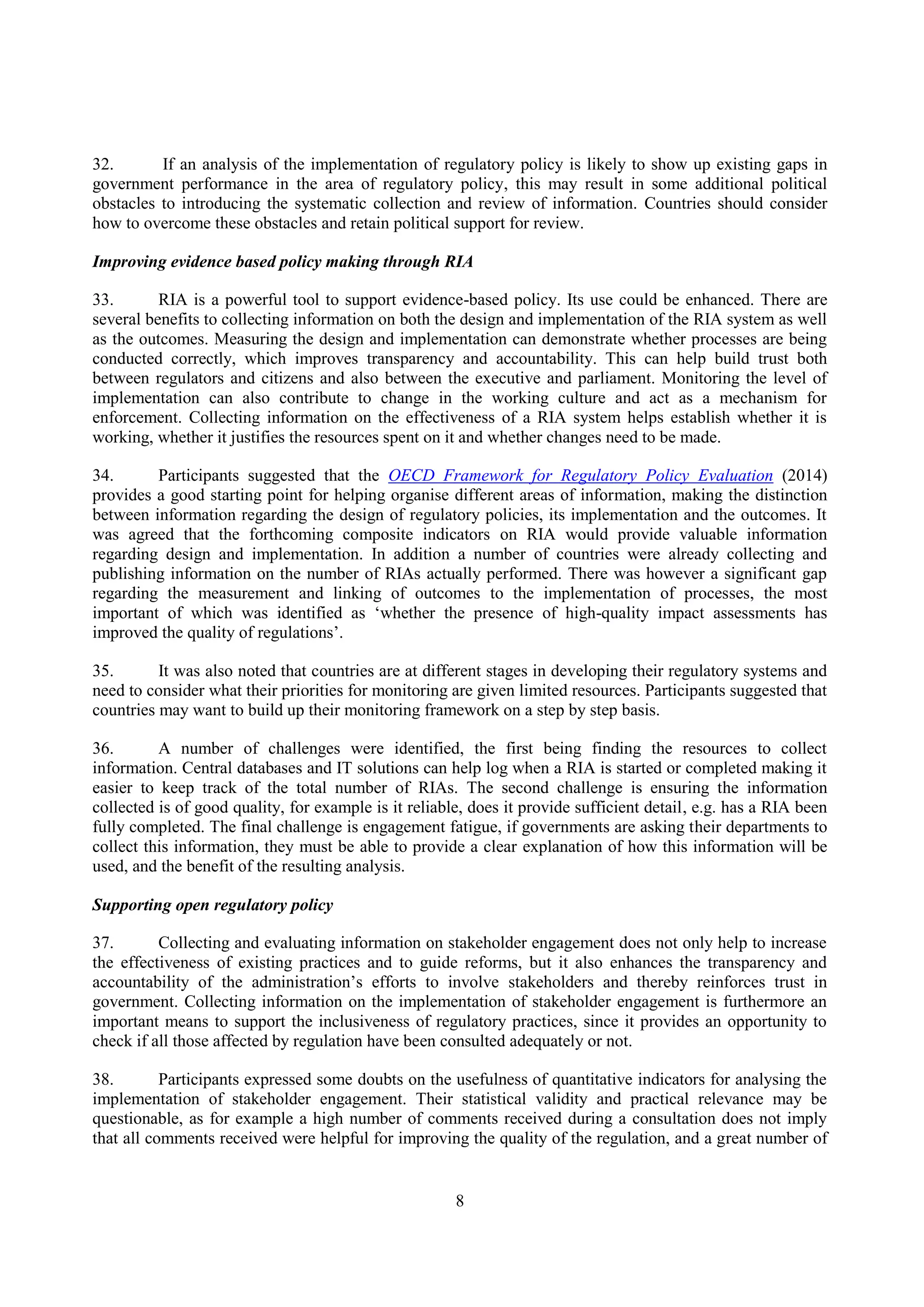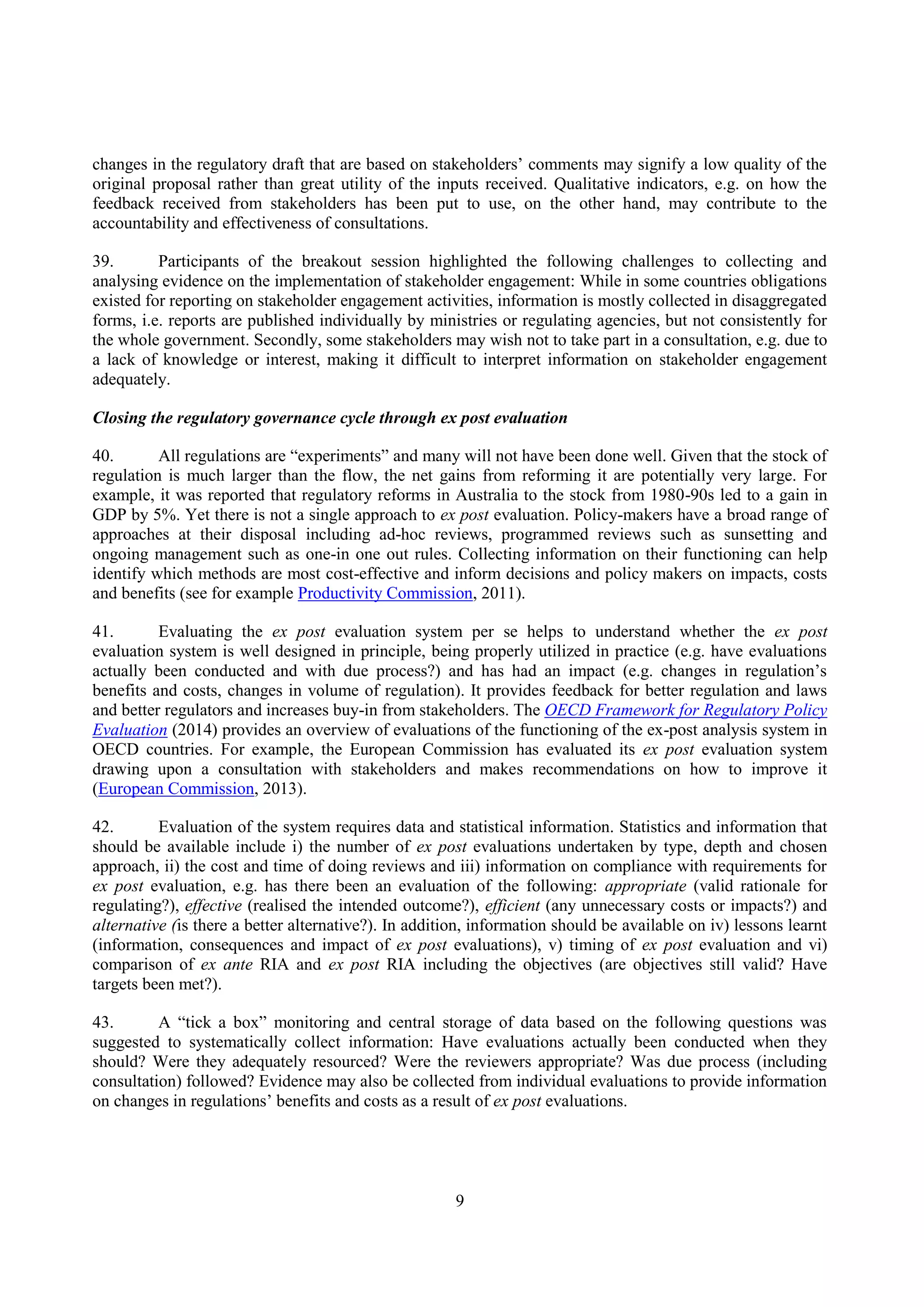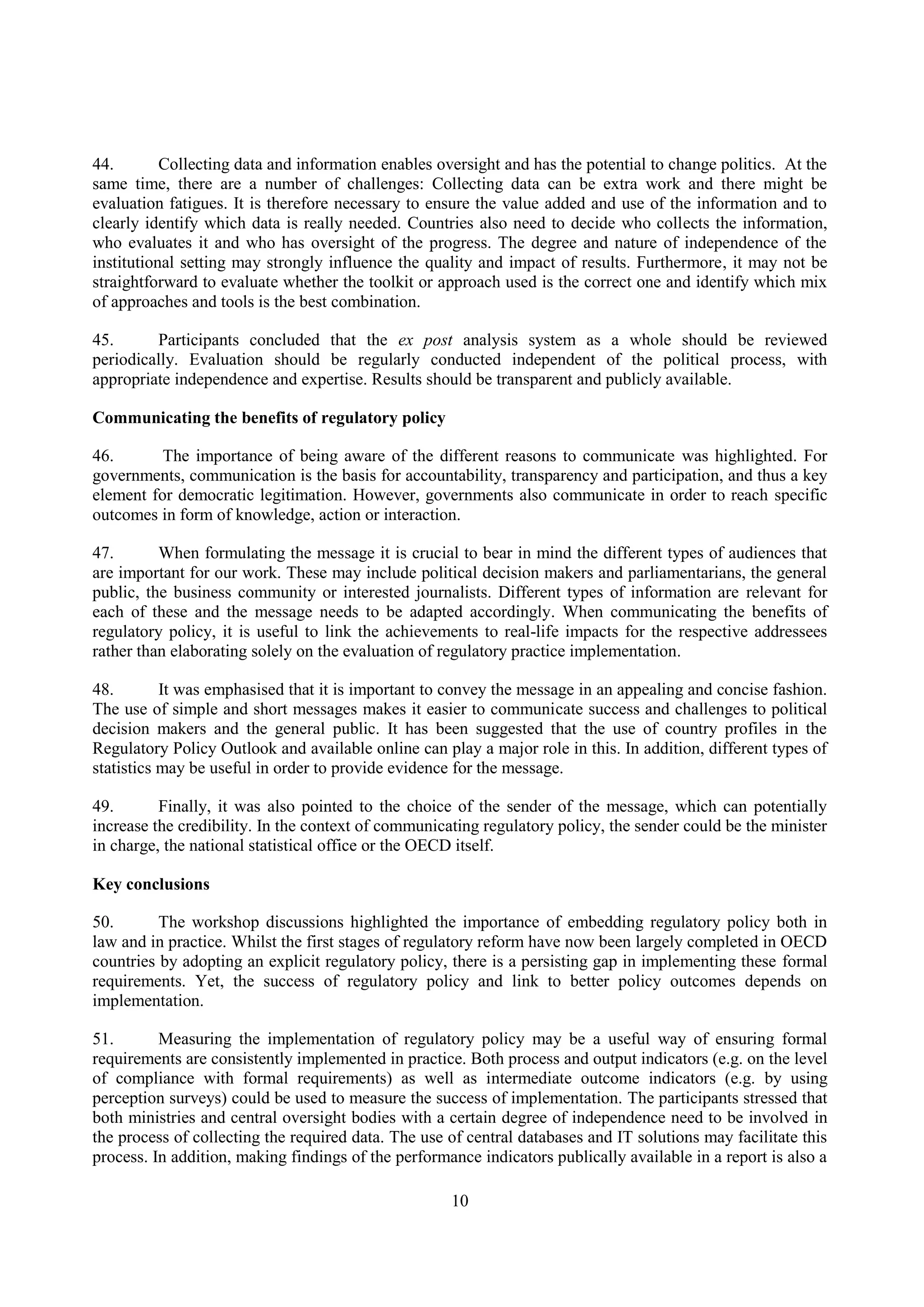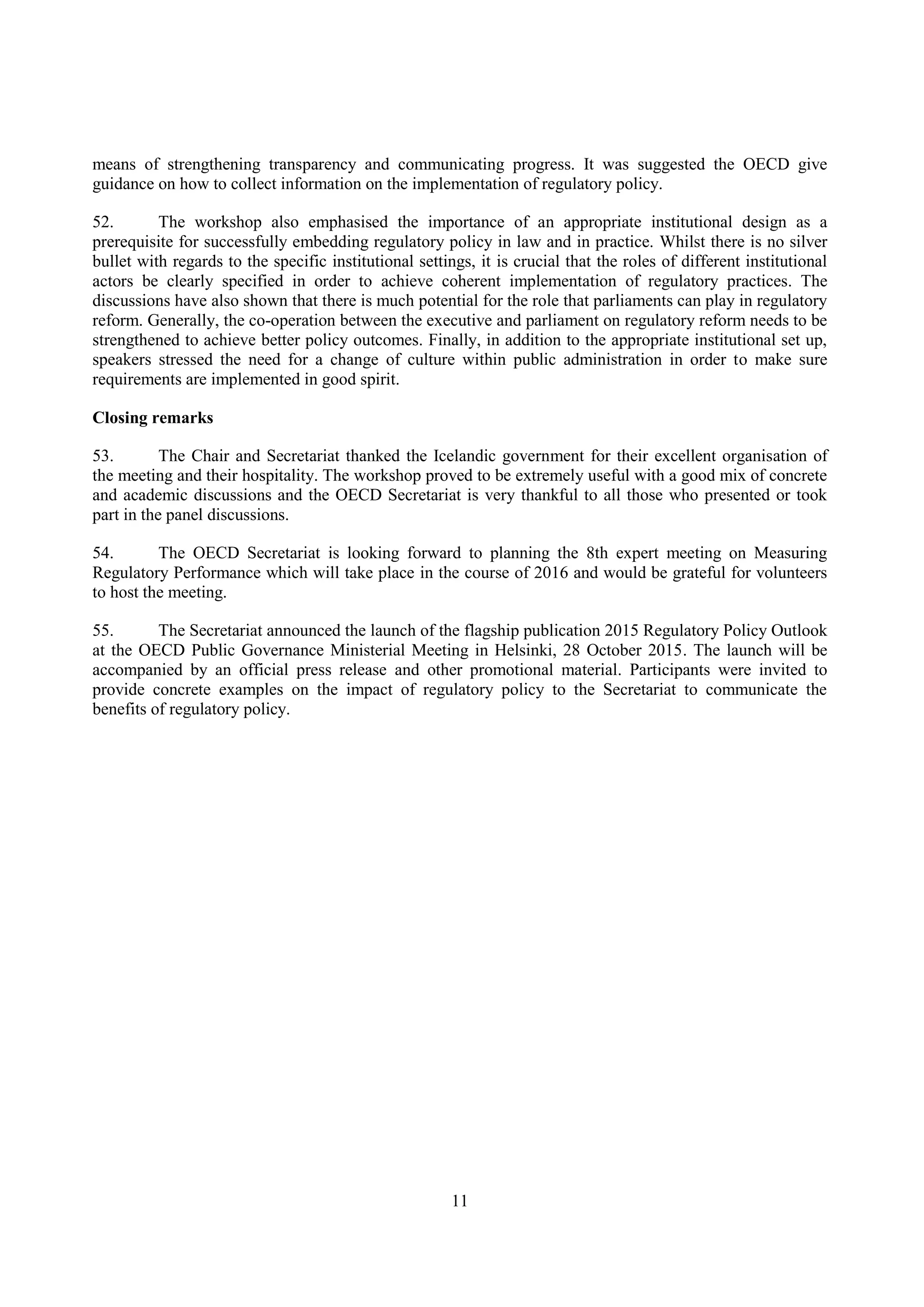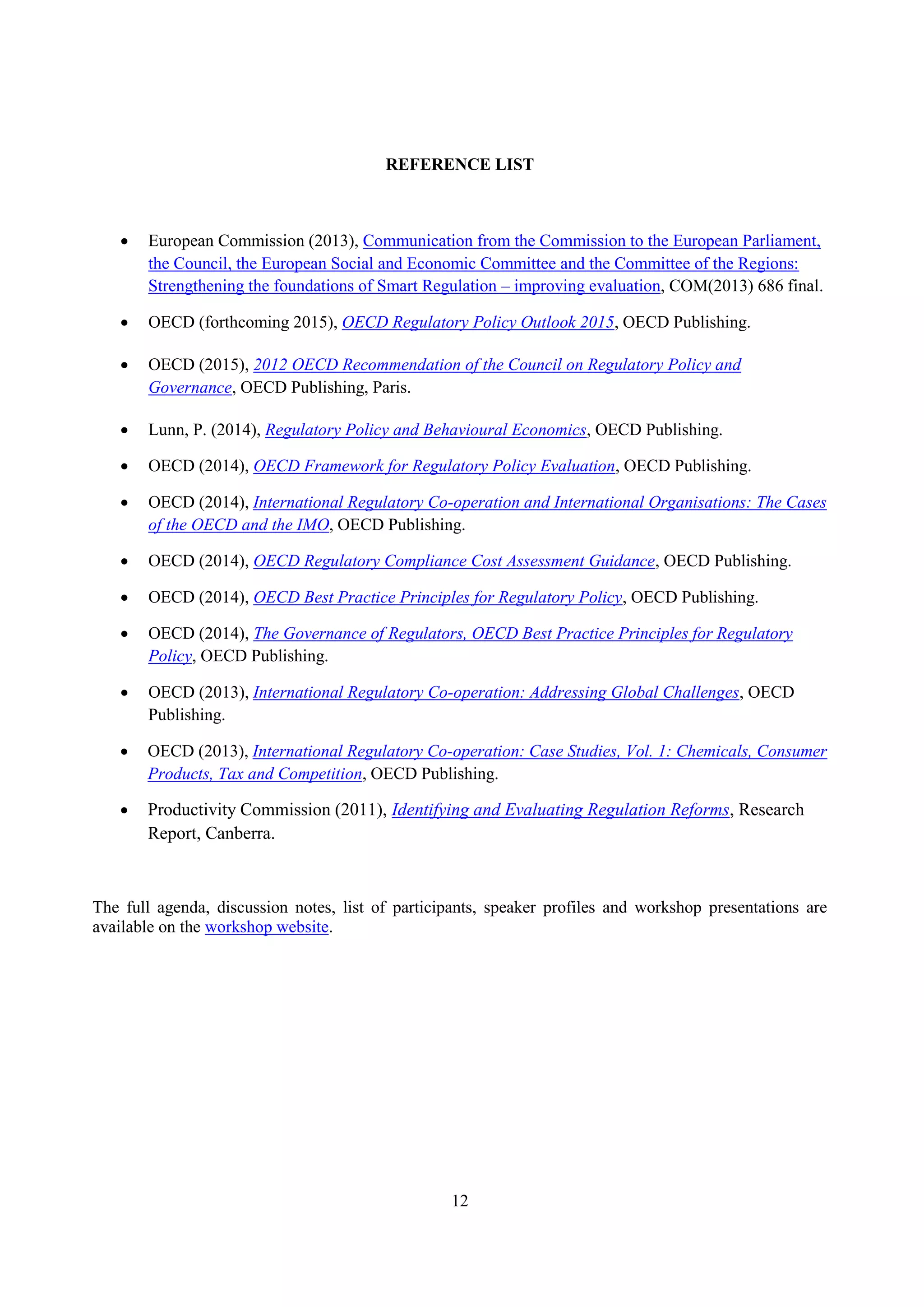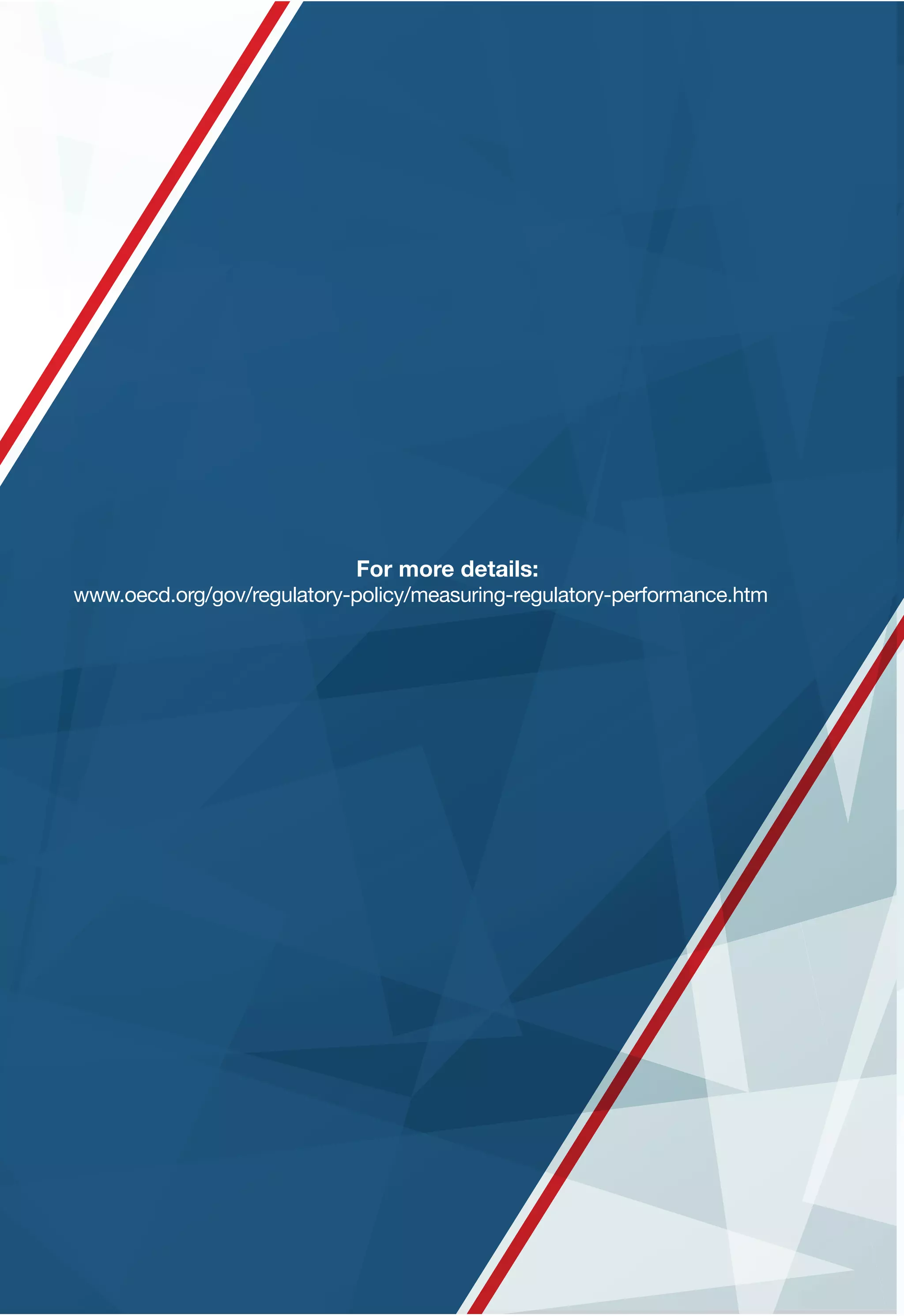This document summarizes the proceedings of the 7th OECD Meeting on Measuring Regulatory Performance held in Reykjavik, Iceland. The meeting brought together 60 participants from 22 countries to discuss challenges in consistently implementing regulatory policy in both law and practice. Speakers highlighted the importance of embedding regulatory policy through rules, oversight bodies, and leadership to drive long-term sustainability. Participants discussed collecting evidence on regulatory policy implementation and outcomes to track progress, maintain political commitment, and ensure accountability. The role of parliaments in cooperation with executives to improve regulatory quality was also examined.
